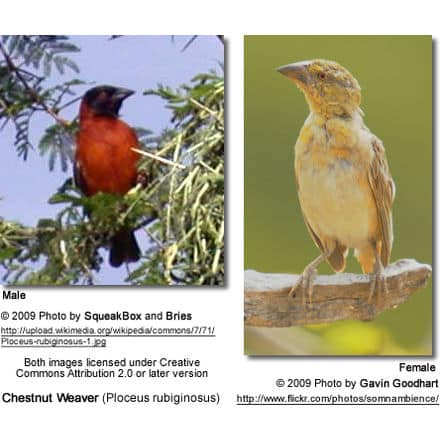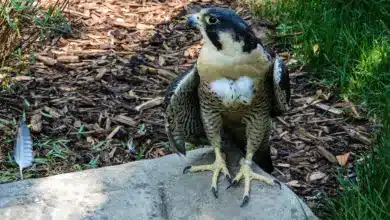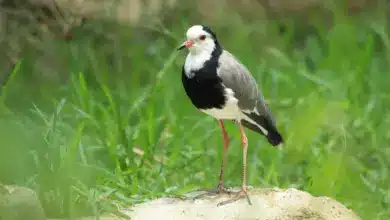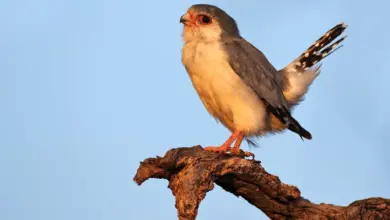Chestnut Weavers
The Chestnut Weavers (Ploceus rubiginosus) are endemic to Africa. Specifically, these birds are found in Angola, Botswana, Eritrea, Ethiopia, Kenya, Namibia, Somalia, Sudan, Tanzania, and Uganda. Their preferred habitats are light and densely wooded forests (dry thornveld) and riverine woodland. They are often found around Mopane trees. They usually occur in small family groups or in large flocks.
Subspecies and Distribution
Ploceus rubiginosus rubiginosus (Nominate Race – Rüppell, 1840): Occurs naturally in extreme southeastern Sudan to south and eastern Ethiopia, northwestern and southern Somalia, Kenya (except coast and highlands), and northern Tanzania(interior plateau)
Ploceus rubiginosus trothae (Reichenow, 1905): Occurs naturally in the Acacia savanna of southwestern Angola, northern Namibia and northwestern Botswana

Description
The breeding male has a black head, brown eyes, brown bill, white throat, chestnut back and grey legs.
Length: 5.1 inches or 14 cm
Weight: male 1 – 1.3 oz (~28–37 g), female 0.9 – 1.1 oz (~25–31 g)
Diet / Feeding:
Mostly feed on Guinea grass seeds, insects (i.e., termites, butterflies, bees, wasps, locusts and ants), as well as the nectar of Aloe species.
Breeding / Nesting
The breeding season stretches from December to May, with most breeding activities being recorded between January to March.
Chestnut Weavers are monogamous, remaining with one partner for the rest of their natural lives, or until one of them perishes.
The male constructs the cylindrically shaped nest with a short entrance tunnel at the base. He weaves the nest using grasses such as Common nine-awned grasses, love grasses and bushman grasses. Once a female accepts a nest, she will line the nest with grass seed heads. The nest is generally strung from the tip of a branch of a tree, such as Acacia, Albizia and Mopane about 10 – 26 feet (~3 – 8 meter) above ground.
The average clutch consists of 1 – 6 white eggs, which the female alone incubates for about 11 to 14 days. Once the hatchlings emerge, the female feeds them insects, such as caterpillars, grasshoppers, and crickets. The young fledge the nest when they are about 13 to 16 days old.
Global Names (alphabetical order):
Afrikaans: Bruinwewer … Chinese: ??? … Czech: Snovac hnedavý … Danish: Rødbrun Væver … Dutch: Kastanjewever … German: Maronenweber, Maronen-Weber, Rotbrauner Weber… Finnish: Kastanjakutoja … French: Tisserin brun / marron / roux, rubigineux … Hungarian: gesztenyebarna szöv?madár … Italian: Tessitore castano … Japanese: kuriirohataori / ???????? … Latin: Ploceus rubiginosus / tricolor interscapularis … Lithuanian: Kaštoninis aud?jas … Norwegian: Kastanjevever … Polish: wiklacz kasztanowaty … Portuguese: Tecelão castanho, Tecelão-canela … Russian: ?????????? ???? … Slovak: pletiarka gaštanová … Spanish: Tejedor Castaño … Swedish: Kastanjevävare … Swahili: Kwera Kahawiachekundu
Weaver Information and Species Listing … Weaver Photo Gallery



